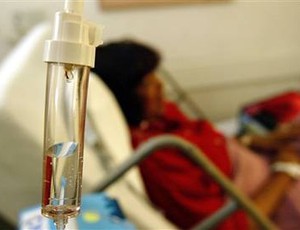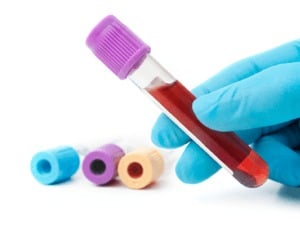Iron deficiency anaemia in children receiving HPN

“Our aim was to determine the incidence of iron deficiency anaemia in paediatric HPN and efficacy of each therapeutic approach” Cernat et al (2022).
IV filter and microscopic particles during infusion – Full Text

“Without an in-line filter, microscopic particles are injected into the body, and there is no evidence that the injected crystals do not cause permanent damage” Shimoyama et al (2022).
Intraosseous access management – Full Text

“Therefore, it is of crucial importance that all nursing professionals know how to handle the different intraosseous devices in situations in which it is not possible to achieve immediate peripheral venous access” Astasio-Picado et al (2022).
OPAT strategy for intravenous drug users – Full Text

“Emerging evidence supports the use of outpatient parenteral antimicrobial therapy (OPAT) and, in many cases, partial oral antibiotic therapy for the treatment of injection drug use-associated infective endocarditis” Adams et al (2022).
Superior Vena Cava injury following CVC placement – Full Text

“This patient presented with bleeding of the superior vena cava due to an iatrogenic injury to it during the CVC in the right internal jugular vein” Jung et al (2022).
Occupational blood exposure in South Africa – Full Text

“The findings suggest that BBF related knowledge and practices among EMS providers working in the eThekwini metropole may be inadequate, and may increase the risk of blood exposure” Chetty et al (2022).
Blood transfusion through infusion pump

“The pump design affects the degree of hemolysis. However, for all tested pumps and RBC conditions, this increase was minimal” Hadjesfandiari et al (2022).
OPAT survey across Europe

“Delivery of parenteral antimicrobials in non-inpatient settings (DPANS) may be through a dedicated outpatient parenteral antimicrobial therapy (OPAT) service, coordinated by hospital- or community-based specialized teams, or via an infusion service involving community-based health professionals (nurses, general practitioners) without centralized hospital oversight, or through ad hoc arrangements” Emilie et al (2022).
Peripheral IV site and IV complication rates – Full Text

“Available evidence suggests that there is no significant difference between PVC placement in the forearm and at the back of the hand in terms of the incidence of complications” Fan et al (2022).
Six-years PICC experience in France

“The authors report successful outcomes from data collected during the 6-year period demonstrating clear benefits of a nurse-led vascular access team with regard to system wide efficiencies and patient satisfaction” Scimò et al (2022).
Post-exposure needlestick prophylaxis

“The present study aimed to investigate research trends on post-exposure prophylaxis (PEP) against blood-borne viral infections among health care workers” Sweileh (2022).
Detecting asymptomatic central line infection

“Here we describe a case of asymptomatic port infection detected by manual screening of a peripheral blood smear” Carll et al (2022).
Antibiotic optimization in the intensive care unit

“Vancomycin and β-lactam antimicrobials are frequently utilized and have been the focus of dose optimization strategies including extended infusion (EI) or continuous infusion (CI)” Lizza et al (2022).
Implantable port oxaliplatin extravasation – Full Text

“Subsequently, the port-a-cath device was removed and a warm dry compress was applied. After 2 weeks, the patient had fully recovered without any sequelae at the cervical level” Hernando et al (2022).
OPAT oritavancin treatment to support early discharge

“Oritavancin, used to support ED, is associated with lower costs compared with dalbavancin and reduced treatment duration relative to all comparators” Zinzi et al (2022).
Continuous subcutaneous insulin infusion for premature neonates

“We report a case of continuous subcutaneous insulin infusion (CSII) in an ELBW neonate (730 g, 25 weeks GA) requiring insulin infusion for transient idiopathic hyperglycaemia” Desenfants et al (2022).
Malposition of a central venous catheter tip

“The incidence of a malposition of a central venous catheter tip after either right or left internal jugular vein approach was ascertained” Maddali et al (2022).
PICC real-time ultrasound tracking

“Preliminary results have shown a successful increase in polymer’s echogenic properties, without undermining its mechanical and cytocompatibility properties” Contreras et al (2022).
Fluid warmer contamination research – Full Text

“Observed toxicological risk levels associated with the enFlow cartridge (parylene-coated) intravenous fluid warmer were below those set by the Food and Drug Administration and suggest that the use of enFlow cartridge (parylene-coated) is safe with a variety of intravenous solution types and in different therapeutic scenarios” Waldmann et al (2021).
CRBSI treatment with oral antimicrobial therapy

“The length of hospital stay was shorter in the OAT group. OAT was not an independent risk factor for treatment failure. OAT may reduce the duration of hospitalization without adverse effects in these patients” Mun et al (2022).
Perioperative intravenous glucose in infants

“There is a need to define the indications for using glucose containing solutions in infants during the perioperative period, their ideal content, the appropriate thresholds for hypo- and hyperglycemia as well as the optimal point-of care glucose monitoring intervals” Salik et al (2022).
Peripheral IV failure following antibiotic administration – Full Text

“This study identified several antimicrobials associated with increased PVC failure, including some previously known for this association, and some hitherto unidentified” Larsen et al (2022).
CVC infection catheter salvage – Full Text

“We report a rare case of central venous catheter (CVC) infection caused by Leuconostoc citreum, which was successfully treated with salvaging of the CVC” Modaweb et al (2022).
PICC infection in immunocompromised patients – Full Text

“This case of recurrent A. xylosoxidans line infection highlights diagnostic and management challenges associated with catheter-related infections” Houlihan et al (2022).
Implantable port fungemia – Full Text

“His condition improved after the removal of the catheter and the administration of antifungal drugs” Sakoda et al (2022).
Umbilical venous catheter update – Full Text

“This review article is an overview of the current knowledge and evidence available in the literature about UVCs. Our aim is to provide precise and updated recommendations on the use of this central line” D’Andrea et al (2022).
Implantable port and fear of pain

“Kinesiophobia is common in cancer patients with TIAPs, and it is closely related to the subjective experience of daily activities, which requires more attention and early intervention to reduce the potential adverse effects” Wang and Qiu (2022).
CLABSI pathogens during the COVID-19 pandemic

“To assess potential changes in the pathogens attributed to central line-associated bloodstream infections between 2019 and 2020, hospital data from the National Healthcare Safety Network were analyzed” Weiner-Lastinger et al (2022).
Neonatal extravasation injury – Full Text

“We present three cases of neonatal extravasation injuries with varying presentations, etiological agents, and timing of management” Yew et al (2022).
Comparison of capillary and venous blood sampling

“Based on these results, capillary blood sampling proved to be an alternative blood withdrawal method for routine coagulation assays, with the exception of APTT, if a venipuncture is unavailable or undesired” Fliervoet et al (2022).

